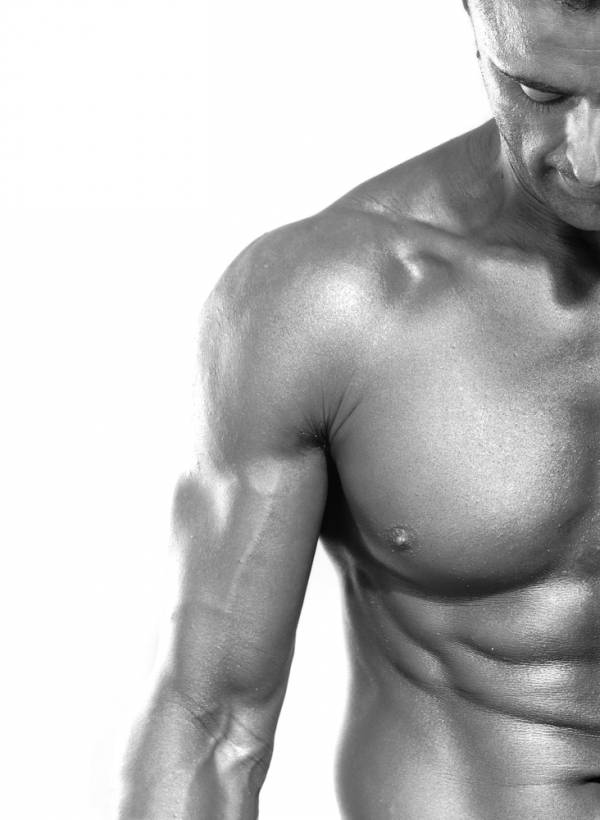We all know weight training was resisted for many years in the early half of the 20th Century, and even beyond. And not just quiet resistance. It was resisted with disproportionate emotional fervor. When listening closely one could discern both an intellectual resistance (of sorts) and an emotional one. Various reasons were given, but it was the emotional content of the resistance that was the most telling. People were simply against the iron and had a keen dislike of those who trained with weights. What was really going on?
One aspect of resistance was image. Early athletic directors and coaches wanted people to believe their star football players, wrestlers, or track stars were all natural-born big men. Being born strong and then doing hard work on the farm or factory floor was considered the best and even most moral way to produce a champion athlete. Weight training was considered unnatural or manufactured, and therefore illegitimate in some way. In the early days when most athletes were still not weight trained this seemed to be born out by results so the prejudiced assumption could prevail.
But as more and more athletes took to the iron, this belief was supported by the old guard all the more zealously. This despite various Research Quarterly articles and other studies in addition to all the anecdotal evidence to the contrary. Resistance to any new idea is often strongest after some degree of acceptance has occurred. The old guard was trying to stem the tide. At the back of their minds they knew they were heading to a minority position. Some research studies may have been cited by the resistance, but closer examination shows they were either old and out of date or they were based in someone else’s equally biased assumptions. If they could just ridicule weight training enough those monsters just might go away and all would be well again. Such thinking persisted into the 1970s and even to today in some quarters.
Even inside Olympic weightlifting there was some fierce resistance. I remember reading about the rise of the squat style snatch and clean. It was condemned by some because it took too much effort to get out of the squat. It never occurred to them that the body can squat far more than it can pull. Many coaches recommended the squat technique only for those flexible enough and strong enough to use it. It never occurred to them that those without such qualities would only be among the also-rans in the future.
Coaches also critiqued weight training as something that didn’t help develop the various sport technical movements. They were right about that. It usually doesn’t. One has to practice skills separately. Weight training didn’t help because it was not designed to help. No weight promoter ever advocated it as an all-inclusive way to being a champion in a given sport. For those that condemned the weights because it doesn’t teach one how to throw a pass is like saying a Rolls Royce is no good because it can’t haul a semi. It wasn’t designed for it. Neither was weight training meant to be one’s only training modality. A semi makes a poor limousine.
 Another argument against weight training was the cardio argument. In 1968 Dr. Kenneth Cooper wrote his famous book Aerobics. Soon his disciples were not only recommending running to everyone (fine), but were condemning weight training for all the usual old reasons (not so fine). They seemed to assume that any fitness program could be either weight based, or running based, and never the twain shall meet. It was all or nothing. This held sway for some years but eventually many of these runners saw the effects of their program and wanted to add some strength as well. Eventually sanity emerged and people realized both methodologies could be used simultaneously. In the fullness of time this fitness hybridization led to the birth of CrossFit.
Another argument against weight training was the cardio argument. In 1968 Dr. Kenneth Cooper wrote his famous book Aerobics. Soon his disciples were not only recommending running to everyone (fine), but were condemning weight training for all the usual old reasons (not so fine). They seemed to assume that any fitness program could be either weight based, or running based, and never the twain shall meet. It was all or nothing. This held sway for some years but eventually many of these runners saw the effects of their program and wanted to add some strength as well. Eventually sanity emerged and people realized both methodologies could be used simultaneously. In the fullness of time this fitness hybridization led to the birth of CrossFit.
An emaciated runner was no longer considered to be the ultimate in fitness. I remember when one marathoner wrote that he thought that the physique of the marathon runner was fast becoming the ideal, replacing that of the bad old weight lifter. With all due respect for that fine sport, I never noticed it happening in my subsequent observations of my fellow men. The movie popularity of Stallone and Schwarzenegger seemed to indicate otherwise.
On reflection, the detractors of weight training all seemed to operate from a sort of yearning for an earlier, more romantic, and less technological time. None realized that all strength and hypertrophy comes from exercise at some point, regardless of genetics. People are not “born strong.” They have to be made strong. Neither did the detractors realize that the muscles couldn’t tell what form the resistance object takes. A barbell or a hayfork, the back cannot tell – it can only contract under load. Still these common sense facts were resisted. But, why?
It was the ego, my friends. The ego. Everyone who ever seriously trained for strength soon becomes aware of the threat that their strength is to the self-esteem of others, particularly to those who see you as competitors in this life. The proximity of others exuding manly strength usually affects other male observers whether they want to admit it or not. If you are much stronger than the average, then someone always seems to arrive on the scene whose sworn duty it seems is to even out the disparity in some fashion. It seems to be something that others just cannot ignore, so they have to deal with it. If you are a female lifter there are other ways to put you down, as I’ve outlined elsewhere.
 Thus before strength superiority is allowed legitimacy, detractors will have require you to demonstrate some other form of athletic superiority. “How far can you hit a baseball?” or “How fast can you run?” are often asked. “But I bet you wouldn’t win in a boxing match” is another common statement. Something, anything is needed to even out the score. And if the enquirer is not into sports in the first place, one’s intelligence (i.e., presumed lack of it) will certainly be raised. If one is strong they surely are dumb, right?
Thus before strength superiority is allowed legitimacy, detractors will have require you to demonstrate some other form of athletic superiority. “How far can you hit a baseball?” or “How fast can you run?” are often asked. “But I bet you wouldn’t win in a boxing match” is another common statement. Something, anything is needed to even out the score. And if the enquirer is not into sports in the first place, one’s intelligence (i.e., presumed lack of it) will certainly be raised. If one is strong they surely are dumb, right?
And if this kind of forced equality cannot be achieved in the here and now, then it will surely occur in the future. The agents of moral compensation, it is hoped, will surely eventually make a mere mortal out of you. Predictions of being muscle-bound, getting badly injured, growing old and ugly, losing your fortune, and dying early abound.
It is this ego-threat situation that I believe has been the most responsible for the resistance to weight training in the post-1950s world. Weight training allowed some to get much stronger than their fellows and for that they had to be kept in check. What does this mean for those of us committed to the iron? Nothing really, in the end. We know the true value of weight training and my advice – you learn to ignore them.
Photos courtesy of Shutterstock.






